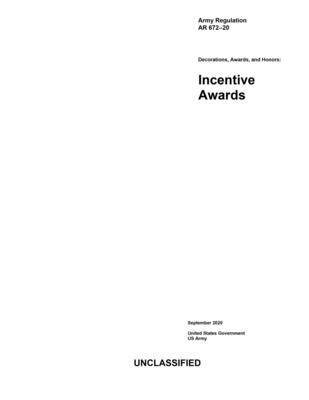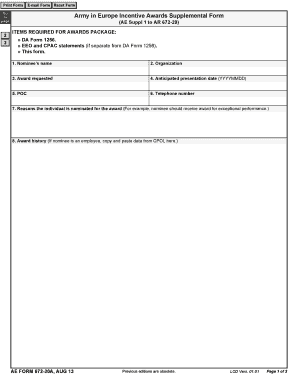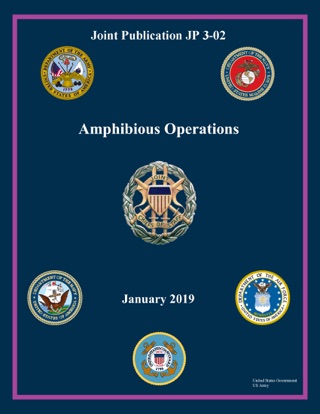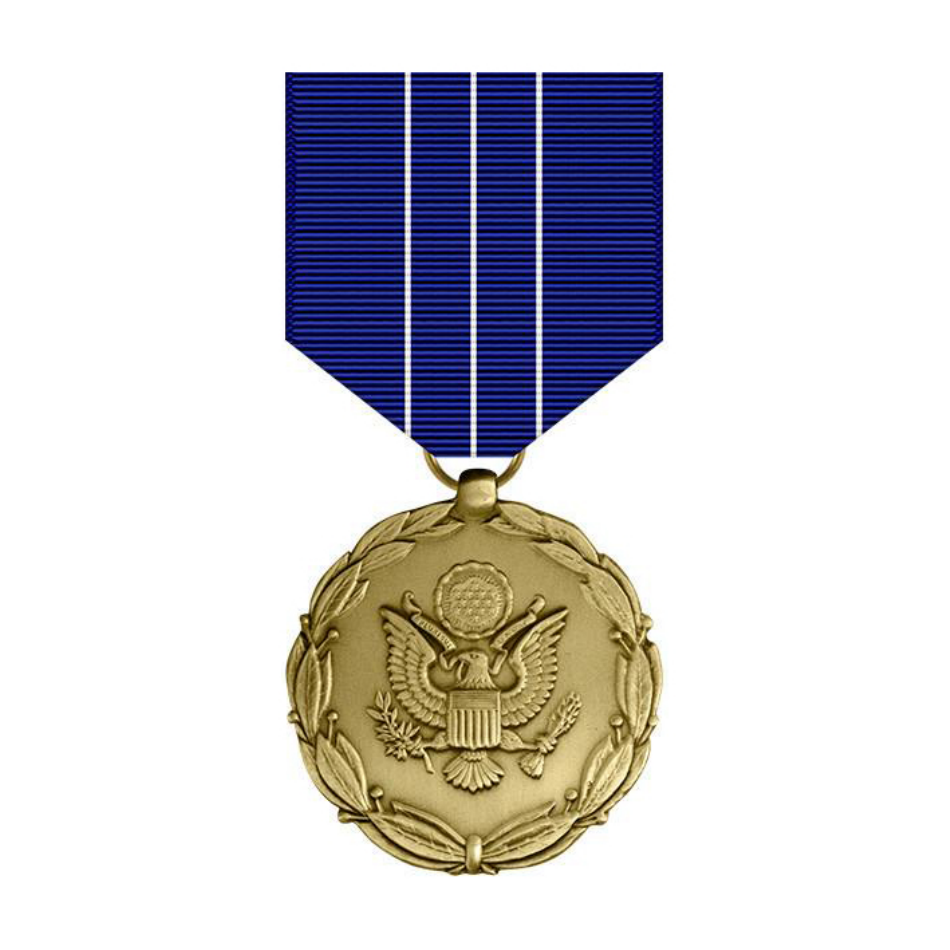Army Regulation 672-20 Incentive Awards
Army Regulation AR 672-20: Incentive Awards
The Army Regulation AR 672-20 provides comprehensive guidelines and procedures regarding decorations, awards, and honors in the United States Army. This regulation, commonly known as the "Incentive Awards Regulation," outlines the criteria and processes for recognizing and rewarding soldiers' exceptional achievements, performance, and dedication to duty.
About Army Regulation AR 672-20

The Army Regulation AR 672-20 serves as a roadmap for commanders, leaders, and soldiers to understand and administer the wide array of incentive awards available to soldiers within the United States Army. These awards aim to motivate, recognize, and reward soldiers' achievements and contributions that go beyond the call of duty.
Key Highlights of Army Regulation AR 672-20

Understanding the key highlights of Army Regulation AR 672-20 is crucial for both soldiers and leaders in maintaining a fair and efficient awards program. Some of the significant aspects of this regulation include:
1. Types of Incentive Awards
Army Regulation AR 672-20 provides a comprehensive list of incentive awards available to soldiers. These awards range from service awards, such as the Army Service Ribbon, to specific recognition awards, such as the Meritorious Service Medal. The regulation lays out the criteria for each award and highlights the actions or achievements that merit consideration for their receipt.
2. Eligibility and Nomination Process
To receive an incentive award, soldiers must meet specific eligibility criteria outlined in the regulation. A nomination process exists to recognize deserving soldiers who exhibit exemplary performance or contributions. Army Regulation AR 672-20 outlines who can submit nominations, the required documentation, and the approval process that must be followed.
3. Selection Boards and Award Approval
Army Regulation AR 672-20 addresses the establishment and responsibilities of selection boards. These boards review and evaluate nominations for higher-level awards. The regulation also defines the authority and approval levels required for granting various awards, ensuring a fair and impartial process.
Frequently Asked Questions (FAQ)
Q: How can a soldier's accomplishments be recognized through incentive awards?

A: Soldiers' achievements can be recognized through various incentive awards detailed in Army Regulation AR 672-20. These awards can be earned through exceptional performance, acts of courage, outstanding leadership, or significant contributions to the mission.
Q: Who can submit a nomination for an incentive award?

A: Nominations for incentive awards can be submitted by any authorized individual, including commanders, supervisors, peers, or subordinates. However, it is essential to adhere to the guidelines and eligibility criteria specified by Army Regulation AR 672-20 while submitting nominations.
Q: How are selection boards involved in the awards process?
A: Selection boards play a crucial role in the awards process outlined in Army Regulation AR 672-20. These boards consist of senior military personnel who review and evaluate nominations for higher-level awards. Their objective is to ensure that the selection process remains fair, consistent, and unbiased.
Conclusion
Army Regulation AR 672-20, the Incentive Awards Regulation, provides a framework for recognizing and rewarding soldiers' exceptional accomplishments and is an integral part of the United States Army. By understanding this regulation, soldiers, commanders, and leaders can effectively administer the awards program and motivate soldiers to strive for excellence in their service to the nation.
For more detailed information and specific guidelines, please refer to the complete Army Regulation AR 672-20 document.
(DA Form 7402). - UNC Charlotte Army ROTC - University Of North
 Image Source : www.yumpu.com
Image Source : www.yumpu.com Army Regulation AR 672-20 Decorations, Awards, And Honors: Incentive
 Image Source : www.brooklinebooksmith.com
Image Source : www.brooklinebooksmith.com Army Regulation AR 672-20 Decorations, Awards, And Honors: Incentive
 Image Source : books.apple.com
Image Source : books.apple.com Army Regulation 600-20 Pdf - Bittorrentchoose
Fillable Online AE Form 672-20A, 27 August 2013 (LCD Vers. 01.01). Army
 Image Source : www.pdffiller.com
Image Source : www.pdffiller.com Army Regulation AR 600-8-22 Personnel-General Military Awards March
 Image Source : books.apple.com
Image Source : books.apple.com regulation personnel amphibious
Maryland Military Department Regulation 672-1 (Awards And Decorations
 Image Source : issuu.com
Image Source : issuu.com DA Form 5655 Download Printable PDF Or Fill Online Meritorious Civilian
 Image Source : www.templateroller.com
Image Source : www.templateroller.com civilian meritorious templateroller
Civilian meritorious templateroller. army regulation ar 600-8-22 personnel-general military awards march. army regulation ar 672-20 decorations, awards, and honors: incentive. Army regulation 600-20 pdf. Fillable online ae form 672-20a, 27 august 2013 (lcd vers. 01.01). army